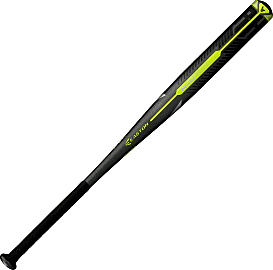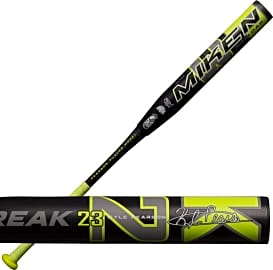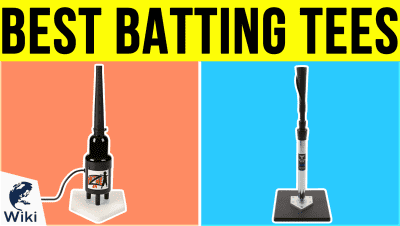The 10 Best Softball Bats

This wiki has been updated 39 times since it was first published in July of 2015. Whether you're an amateur player or a serious college contender, our range of softball bats has something that can help you hit a home run. We've included models sized for kids and adults, as well as those designed specifically for slow and fast-pitch games. With one of our recommendations, we are sure you or your child will see a boost in batting performance in no time. When users buy our independently chosen editorial choices, we may earn commissions to help fund the Wiki.
Editor's Notes
November 04, 2020:
We made lots of changes in this recent update, replacing fully half of the items on the our list. We replaced the Louisville Slugger Xeno X19 and the Louisville Slugger LXT X19 with the Louisville Slugger LXT X20 and the Louisville Slugger Proven, the last of which is older than both 2019 models but has outshined both in reviews.
In place of the Easton Wonder -12 Fastpitch we added the popular Easton Hammer, and also brought on the versatile Easton Ghost, which is available in a size and weight for players of any age and size.
We removed the Axe Bat Element Fastpitch and the Rawlings Storm Youth and in their place added the Mizuno Jennie Finch, another highly affordable option for young and inexperienced players.
The items on this list cover a wide variety of materials and cater to a wide range of players. Those looking more specifically for bats approved for professional play should check out the best ASA softball bats, whereas people who prioritize comfort and springiness should take a look at the best composite softball bats, which incorporate reinforced carbon fiber polymers in their construction.
May 17, 2019:
As is the case with this category on an annual basis, most of the big names in the industry came along with new models, rendering the entirety of our previous ranking obsolete. Of course, new doesn't always mean better, and some of the latest models by companies like Louisville Slugger and Easton failed to meet our quality control standards, as their ambitious designs left them more vulnerable to breakage. Those companies do have some products on our list, however, mainly among their offerings that do a better job balancing out features like decreased weight, increased flexibility, and top-tier power performance with the need for the bat to actually last more than a few games. We also have a couple of models for youth players, including an upgraded version of the Easton model previously in our number two spot.
What Do I Need To Consider Before Purchasing A Softball Bat?
At the very least, doing so will allow you to narrow down your choices.
The first thing you need to consider before purchasing a softball bat is whether you're buying that bat for a child or an adult. Children's bats are slightly shorter (29-32 incehs) than adult softball bats (32-34 inches). And, obviously, there is a difference in average density with children's bats weighing in at 14-27 ounces and adult bats weighing in at 23-30 ounces.
You'll also want to take into account whether you're purchasing the bat for occasional use, or whether you plan on using it whenever you're playing in a league. Most leagues (even amateur ones) enforce strict guidelines when it comes to a regulation bat. It's best to know what these guidelines are before purchasing a bat that you can't use, or, worse yet, a bat that costs your team unwelcome sanctions.
Lightweight bats (i.e., 23-27 ounces) are generally better for a tight, fast swing. Heavyweight bats (i.e., 27-30 ounces or more) are generally better for power-hitting, or driving the ball long. As straightforward as that sounds, you may want to stop by a local clubhouse or a sporting goods store just to get a feel for a handful of bats that come in different weights and sizes. At the very least, doing so will allow you to narrow down your choices.
Perhaps the biggest dividing line for most softball players comes down to one of aluminum bats versus traditional wood. Purists will argue that softball is meant to be played with a bat made of wood. But science will argue that an aluminum bat of the same general dimensions will feel lighter, prove more durable, and connect with a ball in a more effective way.
As an aside, be sure to double-check whether any bat you're interested in has been designed for playing softball, as opposed to baseball. There are several differences, especially when it comes to regulation play.
Several Keys To Improving Your Softball Swing
Obviously, the term batting practice is relative, depending on one's experience. If you happen to be just starting out, for example, it might make sense to simply practice your swing with the help of a friend who understands mechanics. Once you've gotten the basics down, you can use a batting tee to work on precision and maintaining your balance.
The height and trajectory of each hit is largely based upon a bat's speed and angle at the moment it makes contact with a ball.
As you progress, you may want to have a friend head out to the mound with a bucket of softballs. Ideally, you'll want that friend to pitch directly over the plate. The goal is to sharpen your hand-eye coordination and your timing. After a few weeks, you may be able to transition to practicing with a pitching machine (adjusted to an easy setting). During these initial stages, all you want to do is make contact with the ball. Speed and power should come a little further down the road.
If you want to lighten things up, grab a stack of Frisbees and have someone pitch them one-by-one across the plate. Taking part in this drill will teach you to keep your eye on the ball, as a Frisbee can rise and fall unpredictably, and its vector can be disrupted by the wind. Sudden shifts like these are similar to what occurs when a pitcher tosses a curveball or a sinker. Great hitters become attuned to what they see, instead of what they expect.
Once you've gotten comfortable, you can attempt to do some hitting for direction. Connecting with the far end of your bat will likely send a softball out along the 3rd- or 1st-base line (depending on whether you're right- or left-handed). Connecting with the sweet spot of your bat will likely send the ball sailing deep toward the center of the field. Connecting with the near end of your bat will likely result in an infield hopper. The height and trajectory of each hit is largely based upon a bat's speed and angle at the moment it makes contact with a ball.
You can learn a lot by simply watching online videos of some of the greatest batters of all-time. How do these players stand? How do they grip the bat? How do they position themselves inside the box? Sometimes it's what a player is doing off the field that is having the most impact. Core training, in particular, can improve a player's hitting power, while also encouraging that player to maintain a firmer stance.
A Brief History Of Softball
The first softball game took place on Thanksgiving Day, 1887, inside of a boat club in Chicago, Illinois. This game was played between Harvard and Yale alumni, many of whom were on hand to listen to a radio broadcast of the annual Harvard-versus-Yale football game.
The first softball game took place on Thanksgiving Day, 1887, inside of a boat club in Chicago, Illinois.
Matters escalated after a drunk fan from one school threw an eight-ounce boxing glove at a fan from the other. In short order, fans from both schools divided into teams. They created a makeshift baseball diamond inside of the boat club. Someone suggested using a broomstick for a bat, and the boxing glove as a ball. A seven-inning game commenced, and the unofficial pastime of "indoor baseball" was born.
Within a week a Chicago reporter named George Hancock had designed a large ball and a custom bat, both of which were to be used in conjunction with indoor baseball. Within two years, the game had acquired a basic framework and a set of rules. Soon after, indoor baseball began to sweep across the Midwest. It transitioned from an indoor winter pastime to being played outdoors.
Throughout the early 1900s, this new form of baseball was given several regional nicknames, including Lemonball, Diamondball, Kittenball, Mushball, and even Pumpkinball. The game was officially named Softball by way of the National Recreation Council in 1926.
In 1934, a joint committee was established for deciding on official rules for sanctioned softball leagues. During the 1940s, a debate raged as "fastpitch" softball began to take hold. Slowpitch remained the more formally-recognized version of the game until 1996, at which point fastpitch softball was introduced as an Olympic sport.).
Today, slow-pitch softball is being played by young girls, while fast-pitch softball is being played by male and female adults. Women's softball continues to have its own international federation and annual championship, but it is no longer included as an Olympic sport.















